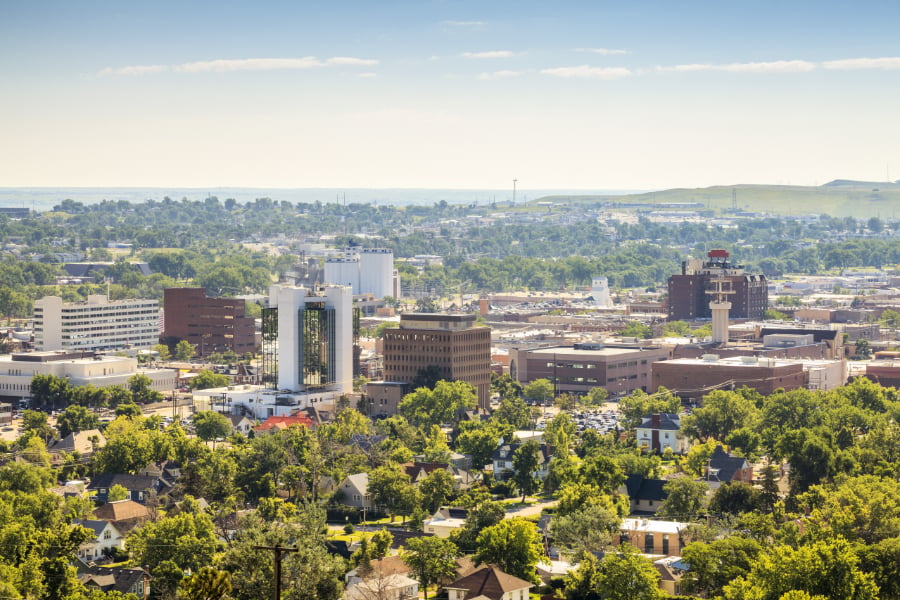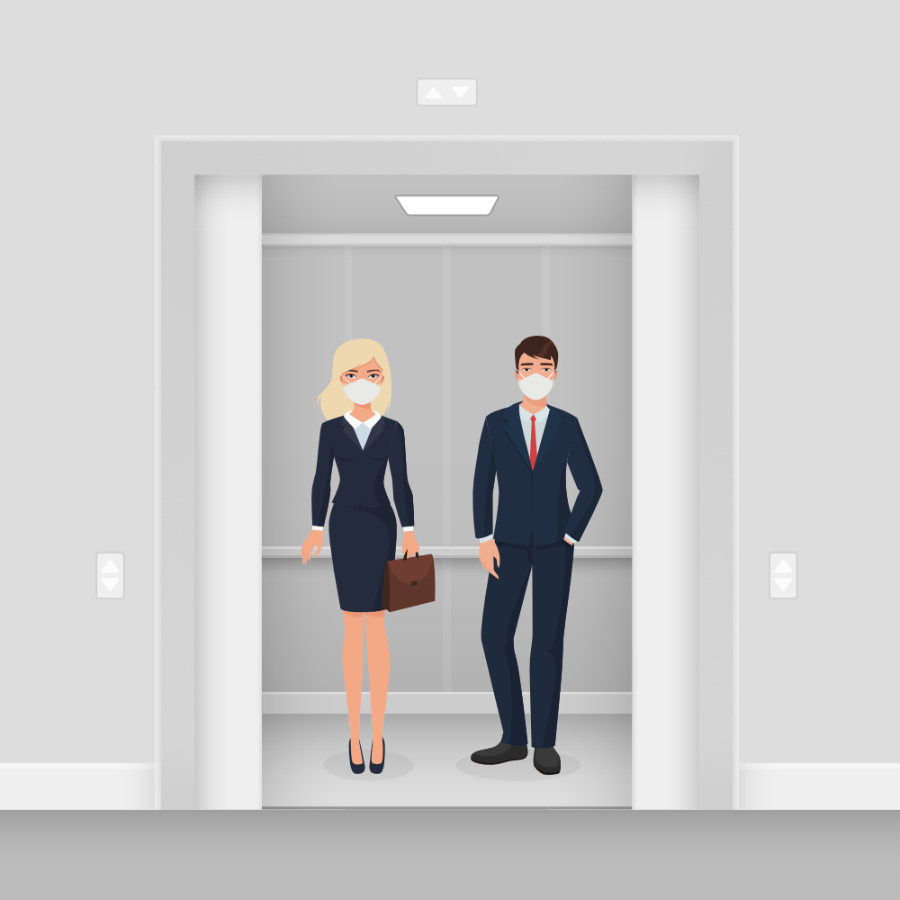Back in 2019, this was a simple question, especially at 8:30 am. You can fit as many workers in an elevator as can physically be crammed in. Right? Now, however, with COVID and with the movement towards social distancing, answering this question becomes much more complicated. And these complications will potentially have huge implications on how office buildings -- especially elevator-served high-rises -- will work in the COVID and post-COVID economy.
Elevator Capacity and Social Distancing
Picture a 12 story mid-rise building. Assume that it has a 20,000 square foot floor plate. How many people can that building hold? 20,000 square feet times 11 floors (since the first floor is probably largely taken up by lobby and amenity space) equals 220,000 square feet of space. At an average of 180 square feet per worker, that building can hold 1,222 people on floors two through twelve.
Now, imagine the beginning and end of the day. In the morning, everyone goes up in the elevator, and in the afternoon, everyone goes down. But how long does it take to fill or empty the building?

Assume that the building has four elevator cabs, and that each one needs an average of two minutes to complete a trip between loaded in the lobby (in the morning), waiting to be filled, dropping off occupants at floors, and returning to the lobby. This means that the building's elevator capacity is 120 trips per hour. With 10 people in a cab, the building can theoretically get filled in just over an hour. Given that start times vary from worker to worker and from employee to employee, this should be adequate capacity.
However, with social distancing, a six foot by six foot elevator can't hold ten people. Instead, it can hold four people with six feet of distance between them. At four people per cab, the building's four elevators require 300 trips to fill the building. This means that the elevators will have to run at 100 percent efficiency and full capacity for two and a half hours just to fill or empty the building.
And, in the real world, that won't happen. People will ride up or down alone either for timing or due to a surplus of caution. They'll hold the door for their friends. And, at times, there will be lulls when the elevators sit idle and theoretical capacity gets wasted.
Technology to the Rescue
One solution to this problem is advanced elevator technology. Given the right equipment, it's possible to use a smartphone app to summon elevators. This would allow the elevator control systems to send you the right elevator at the time right, setting it up for the optimum number of stops along the way. Technologies like this minimize wait times, optimize the number of people in the cab, and get an elevator system as close to maximum utilization as possible.
Rethinking High-Rise Locations
Another solution is to reconsider where you put your business. As of mid-2020, the suburbs are coming into vogue for many reasons. Suburban living is inherently socially distanced. It's less expensive. And, more and more, it's starting to offer more city-like amenities.

At the same time, the suburbs also offer low-rise office space. A two or three story office building doesn't have elevator capacity issues because it either doesn't have elevators or because the stairs are easily usable for the majority of your workforce. While elevator access alone might not be a strong enough reason to abandon your high-rise office for a suburban campus, the other benefits of the suburbs might be.
If a move like this is something you'd consider, reach out to us at iOptimize Realty®. Our experienced tenant representatives can help you weigh your options and find the best possible space for your business.








